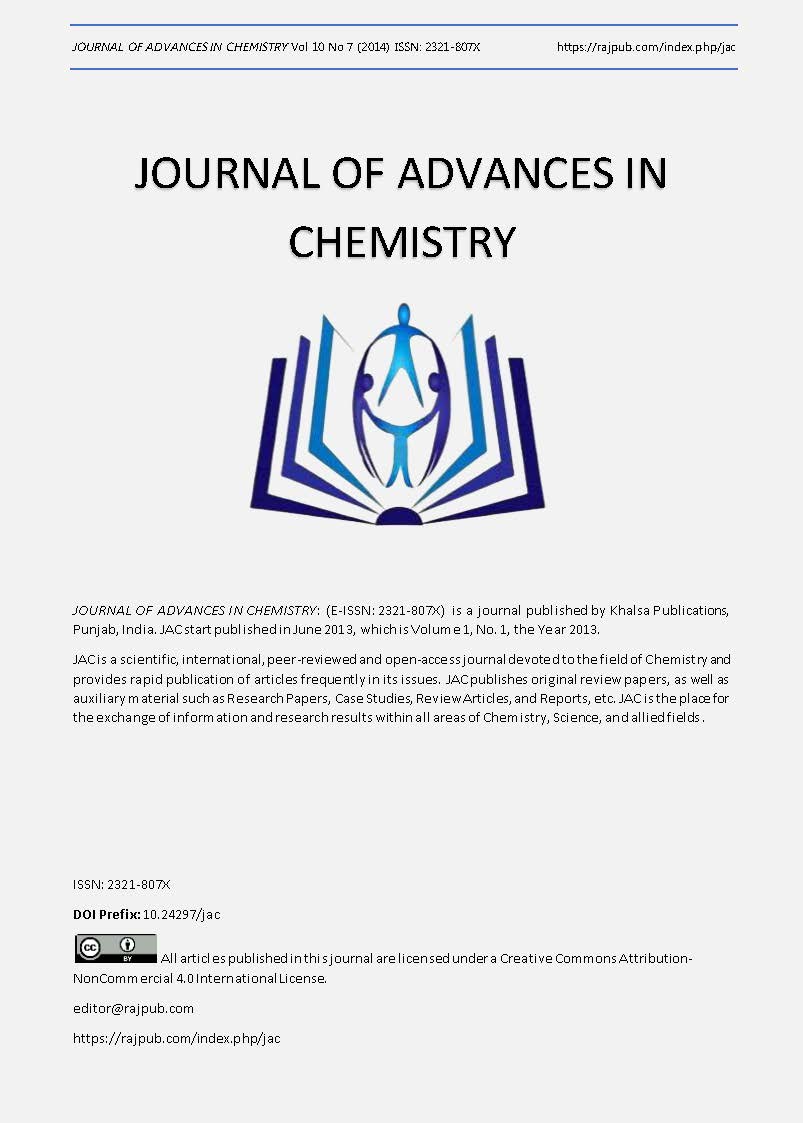Thermodynamic Study of Light Organic Molecules Adsorption onto ZK-4 Zeolite
DOI:
https://doi.org/10.24297/jac.v10i7.6800Keywords:
ZK-4 zeolite, Adsorption isotherm, Langmuir model, CalorimetryAbstract
In this work, we were interested to the interactions of various light gases (critical temperature not exceeding 31 °C) with the zeolite ZK-4 and its varieties exchanged at temperatures close to ambient. The interest first practice since these gases are frequently encountered in industry, and most separations, that concern them by pressure swing adsorption (PSA) are carried at room temperature. By working in these conditions, we will be in the scope of application of Henry's law, which will allow us to better characterize the adsorption of the first molecules (gas-solid interaction). The thermodynamic study should enable us to identify the type of adsorption (localized, non-localized) by applying a theoretical model explaining the experimental results. The choice of the adsorbate was guided by the behavior of the introduced molecules toward the compensating cations present in the zeolite framework. These probe molecules having a specific interaction with zeolitic cations: N2, CO2 (highly quadripolar), C2H4 (double bound) or C3H8 which do not exhibit neither. Final results show that adsorption of nitrogen on ZK-4 sodic form is made in a located way on five sites following Langmuir model and none of CO2 and C2H4 chemisorptions was revealed. Besides, the gaseous molecules interactions in presence of divalent cations replacing sodium in ZK-4 are much less higher than in the case of zeolite 4A, and are characteristic of physisorption on relatively heterogeneous sites.
Downloads
References
[2] Kerr G. T., Chemistry of Crystalline Aluminosilicates II, synthesis and Properties of Zeolite ZK-4. J. Inorg. Chem.1966, 5, 1537
[3] Melchior M. T., Vaughan D. E. W., Jarman R. H., Jacobson A. J., The characterization of Si–Al ordering in A-type zeolite (ZK4) by 29Si NMR. Nature 1982, 298, 455
[4] Ikeda, Kodaira, T. Oh T., Nisawa A., K+ ion distribution in zeolite ZK-4’s with various Si/Al ratios and the contribution of K+ ions to K cluster formation. Microporous Mesoporous Materials 2003, 57, 249
[5] Kerr G. T., Factors Affecting The Formation of Zeolite A. J. Phys. Chem. 1966, 70, 1047
[6] Leiggener C., Currao A., Calzaferri G., Zeolite A and ZK-4 Materials Synthesis, A practical Guide. Ed. U. Schubert, N. Hüsing and R. Laine, Springer 2008, 21
[7] Eddy M.M., Cheetham A. K., David W.I.F., Powder neutron diffraction study of zeolite Na-ZK-4; an application of new functions for peak shape and asymmetry. Zeolites 1986, 6, 449
[8] Oh T., Yu J-S., Ikeda T., Kodaira T., Formation of K clusters in K-form zeolite ZK-4’s with Si/Al>1. Solid State Communications 2002,123, 387
[9] Sadło J., J. Michalik J., L. Kevan L., EPR and ESEEM study of silver clusters in ZK-4 molecular sieves. NUKLEONIKA 2006, 51,49
[10] Mehmet Zahmakiran M., Preparation and characterization of LTA-type zeolite framework dispersed ruthenium nanoparticles and their catalytic application in the hydrolytic dehydrogenation of ammonia–borane for efficient hydrogen generation. Materials Science and Engineering 2012, B 117, 606
[11] Gurvitsch L. G., J. Phys. Chem. Soc. Russ. 1915, 47, 805
[12] Kerr G. T., US Patent 3314752A, USPTO 1961
[13] Ginoux J-L., Bonnetain L., In Characterization of Porous Solids II, Ed. Elsevier 1991, 189
[14] Amari D., Ginoux J-L., Bonnetain L., Textural damage of cation-exchanged LTA zeolites studied by gas adsorption. Zeolites 1994,14, 58
[15] Delaval Y, Seloudoux R, Cohen De Lara E, Determination of isotherms and initial heat of adsorption of CO2 and N2O in 4A zeolite from infrared measurements. J. C. S. Faraday Trans.1986, 1, 82, 365
[16] Takaishi T, Yatsurugi Y, Yusa A., Kuratomi T, Changes in the sieving action and thermal stability of zeolite a produced by ion-exchange. J. C. S. Faraday Trans.1975, 1, 71, 97
[17] Ginoux J-L., PhD Thesis, Institut National Polytechnique de Grenoble 1983
Downloads
Published
How to Cite
Issue
Section
License
 All articles published in Journal of Advances in Linguistics are licensed under a Creative Commons Attribution 4.0 International License.
All articles published in Journal of Advances in Linguistics are licensed under a Creative Commons Attribution 4.0 International License.




